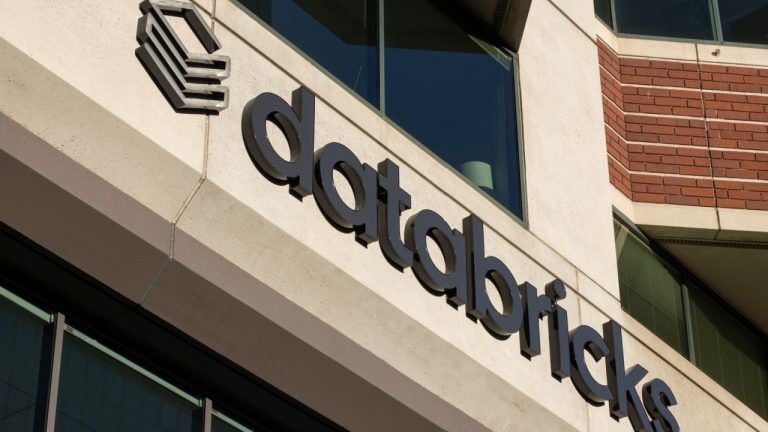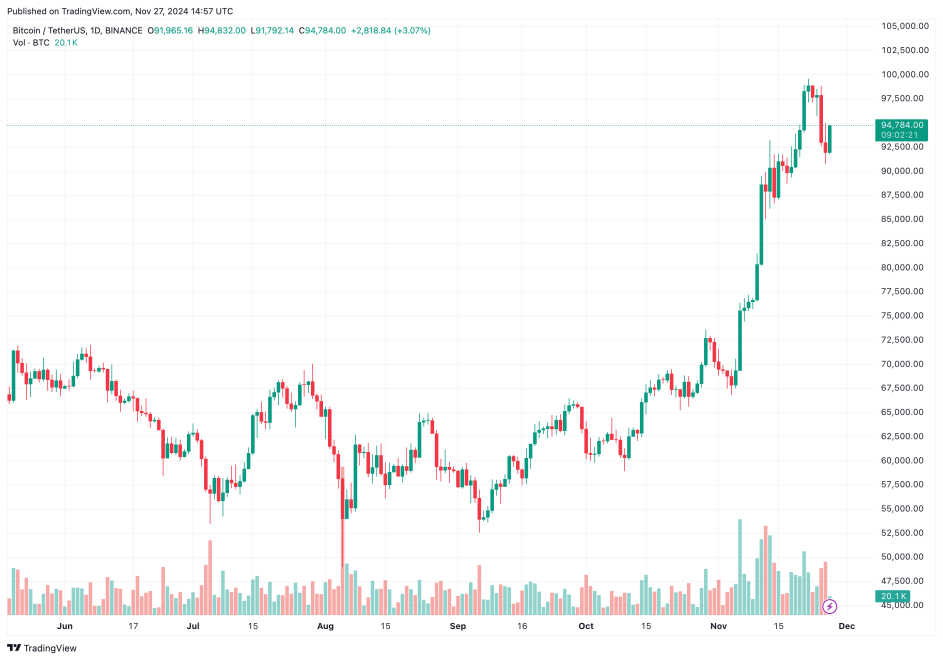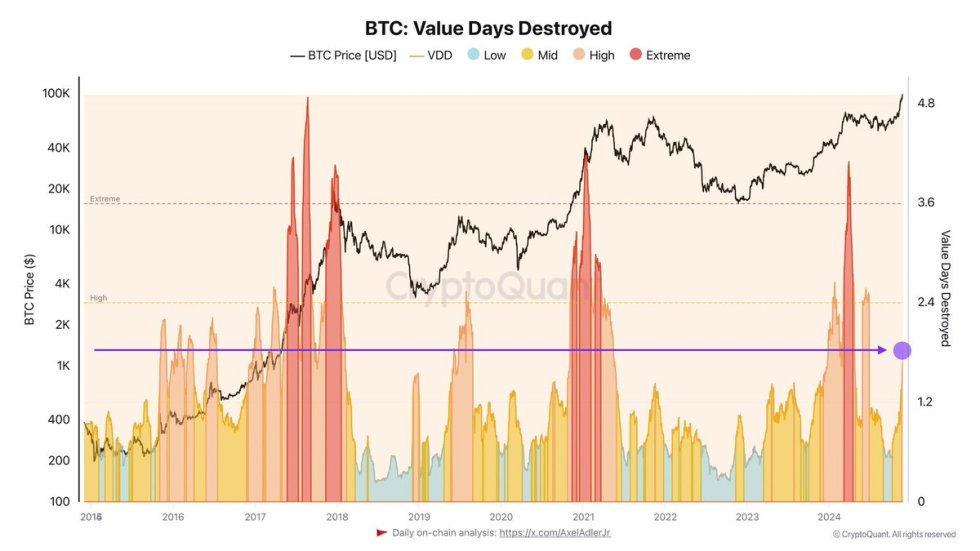Editorial Note: We earn a commission from partner links on Forbes Advisor. Commissions do not affect our editors' opinions or evaluations.
Bitcoin (BTC) and Ethereum (ETH) are the Coke and Pepsi of cryptocurrency. They are the biggest names in crypto, and their combined market capitalization equals more than 60% of the $1 trillion crypto market.
The performance of BTC and ETH often serves as a benchmark to gauge the overall health of the crypto market. Despite their dominance, these cryptos function very differently from one another. Let’s take a deeper look at how Bitcoin and Ethereum compare.
How Bitcoin and Ethereum Compare
Bitcoin and Ethereum are fundamentally different beasts. The former is the first cryptocurrency, designed as a store of value and medium of exchange—but today mostly employed as a speculative risk asset. The latter was designed as a decentralized computing network, which has given rise to the decentralized finance (DeFi) space.
Ethereum also enables payments, using its internal ETH cryptocurrency, but its scope is much broader than Bitcoin by design.
Both systems use blockchain technology to validate and record transactions. Still, forthcoming changes to Ethereum, commonly referred to as Ethereum 2.0, should significantly update the crypto’s speed, sustainability and accessibility.
One major difference between Bitcoin and Ethereum is the consensus mechanisms they employ to run their respective blockchains.
Featured Partner Offers
Limited Time Offer:
Deposit $100 get $10 (US Only)
Fees
1%/1%
Cryptocurrencies Available for Trade
20+
2
Coinbase
Fees (Maker/Taker)
1.99%*/1.99%*
Cryptocurrencies Available for Trade
100+
2
Coinbase
3
Crypto.com
Fees (Maker/Taker)
0.40%/0.40%
Cryptocurrencies Available for Trade
170+
3
Crypto.com
What Is a Consensus Mechanism?
A consensus mechanism is a type of algorithm used to run a blockchain. The main goal of any consensus mechanism to to solve what’s known as the “double spend” problem.
Once you spend a $20 bill, it no longer belongs to you. You cannot spend it a second time. Before Bitcoin, the trouble with the digital currency concept is that they were all just strings of computer code and could be copied infinitely and spent twice—or countless times.
Bitcoin’s consensus mechanism blockchain was designed to solve the double spend problem. It employs validators to ensure that each crypto unit can only be spent once, and to record each transaction on a distributed ledger for all of the world to see.
Since everyone can see identical copies of the Bitcoin blockchain, nobody can copy and paste their digital money and spend it twice. Doctoring one transaction is hard enough, but you’d also have to change every subsequent transaction since each one references its forerunners.
There are two main consensus mechanisms employed by cryptocurrencies. Bitcoin uses the proof of work mechanism, while Ethereum is moving toward a proof of stake consensus mechanism.
Proof of Work
Proof of work requires validators to solve complex math problems. They compete for the chance to be chosen to validate a new batch of transactions and add them to the blockchain, earning a set amount of crypto in the process.
In the early days of Bitcoin, validators were largely amateur hobbyists. Still, as the math problems in the Bitcoin proof-of-work system have become more challenging, the amount of processing power needed to solve each one has increased exponentially. Bitcoin mining is largely handled by specialized companies who can afford the expensive bitcoin mining rigs and the energy needed to run them.
Proof-of-work systems like Bitcoin have also drawn criticism for the amount of energy expended by the computer hardware involved. According to the Cambridge Centre for Alternative Finance, Bitcoin’s electricity consumption exceeds Norway’s annual electricity consumption, at an annualized rate of 127 terawatt-hours (TWh).
Proof of Stake
Proof of stake requires validators to stake their crypto holdings to earn the chance to validate transactions and add blocks to the blockchain.
The more crypto someone stakes, the greater their chances of being chosen to validate a block of transactions to a blockchain and earning a set amount of crypto. The system also discourages bad actors with financial penalties.
Proof of stake stacks the deck in favor of people with more money but protects against people adding fraudulent records to the blockchain. Without the need for powerful computer hardware, proof of stake is considered a more environmentally friendly consensus mechanism than proof of work.
Decentralized Payments vs. Decentralized Software
Bitcoin was originally developed for decentralized payments. At the outset, the original cryptocurrency’s designers wanted to help people to send and receive payments without an intermediary, such as a bank.
Ethereum, on the other hand, was designed to be a distributed computing platform. The designers of Ethereum built the platform to provide a foundation for running decentralized software programs, which have become known as smart contracts and distributed apps (dApps).
A smart contract is a digital agreement between two or more parties that will execute itself once certain conditions are met. For example, Account A will release Asset X once it has received Asset Y from Account B. This could make property sales or the transfer of ownership faster and less liable to fraud.
A dApp is an application that isn’t controlled by a central authority. Twitter is an example of a centralized app, with users relying on it as an intermediary to send and receive messages. As such, users play by the rules, it enforces and the algorithm it uses to control content.
Distributed apps help users send and receive data directly without an intermediary. Peepeth is a Twitter-like dApp. It claims that as an app, it doesn’t optimize for advertising revenues, an issue it says users of centralized apps suffer from.
Price Volatility
BTC has certainly been more valuable than ETH, peaking at around $68,789 in November 2021. On the other hand, ETH peaked at about $4,891 in the same month.
The original crypto is down by more than 50% since the start of the year, and has only recently rallied from its June low of $17,708. That said, Bitcoin and Ethereum are up by more than 750% and 630%, respectively, over the last five years.
Ethereum’s price has recently rallied from its June low, in anticipation of the “merge,” when the leading altcoin switches to the “proof of stake” mechanism entirely. The merge is expected to take place around September.

You can get bonuses upto $100 FREE BONUS when you:
💰 Install these recommended apps:
💲 SocialGood - 100% Crypto Back on Everyday Shopping
💲 xPortal - The DeFi For The Next Billion
💲 CryptoTab Browser - Lightweight, fast, and ready to mine!
💰 Register on these recommended exchanges:
🟡 Binance🟡 Bitfinex🟡 Bitmart🟡 Bittrex🟡 Bitget
🟡 CoinEx🟡 Crypto.com🟡 Gate.io🟡 Huobi🟡 Kucoin.




















Comments